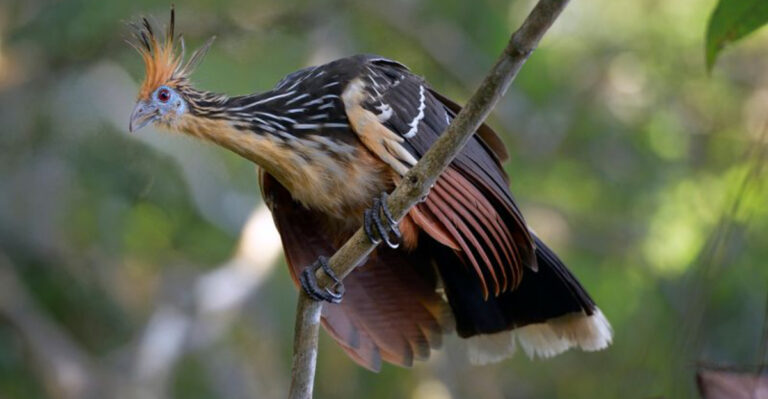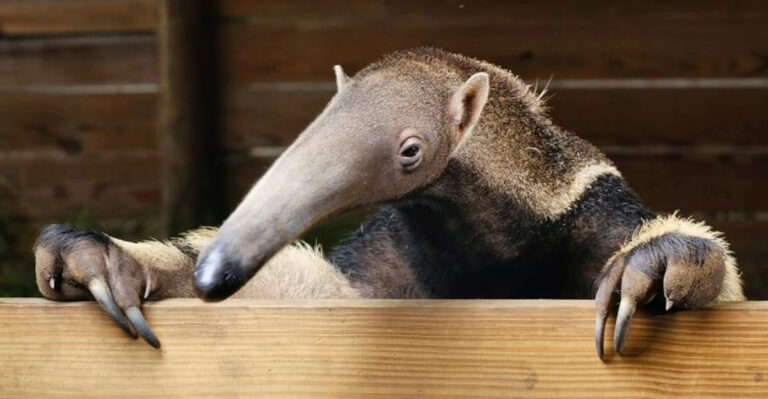The Best Ways To Bring Purple Martins To Your Backyard
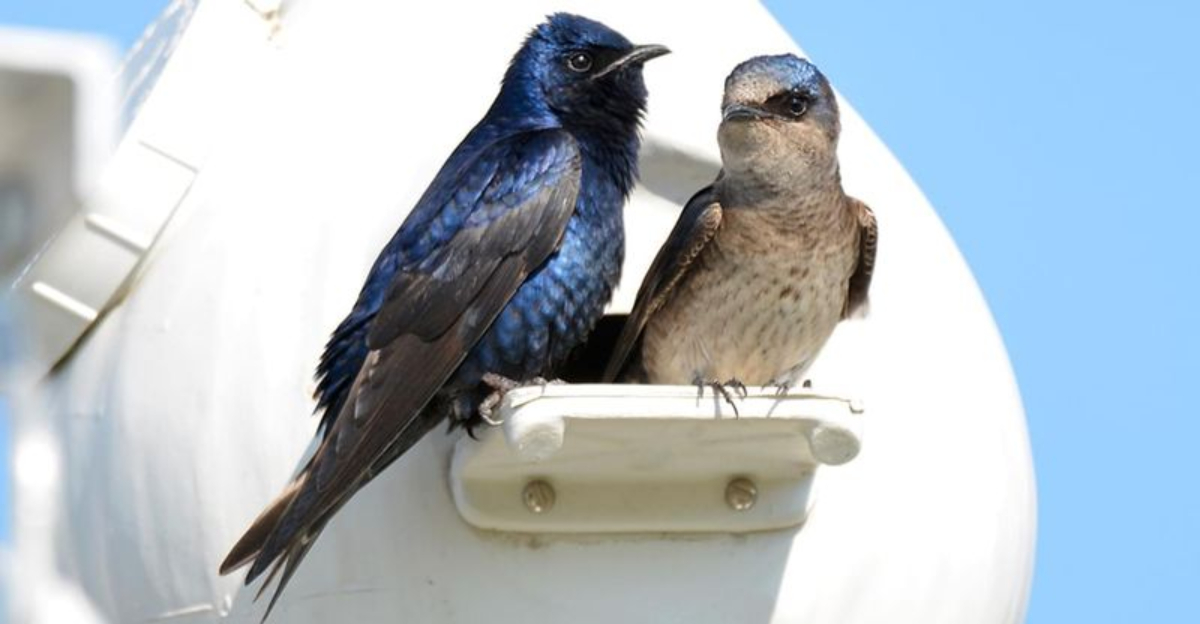
Purple Martins, North America’s largest swallows, bring joy with their acrobatic flights and cheerful chirping. These beautiful birds rely almost entirely on human-provided housing east of the Rocky Mountains.
Attracting these natural pest controllers to your yard takes some know-how, but the reward of watching them raise families and perform aerial displays makes the effort worthwhile.
1. Install Proper Housing
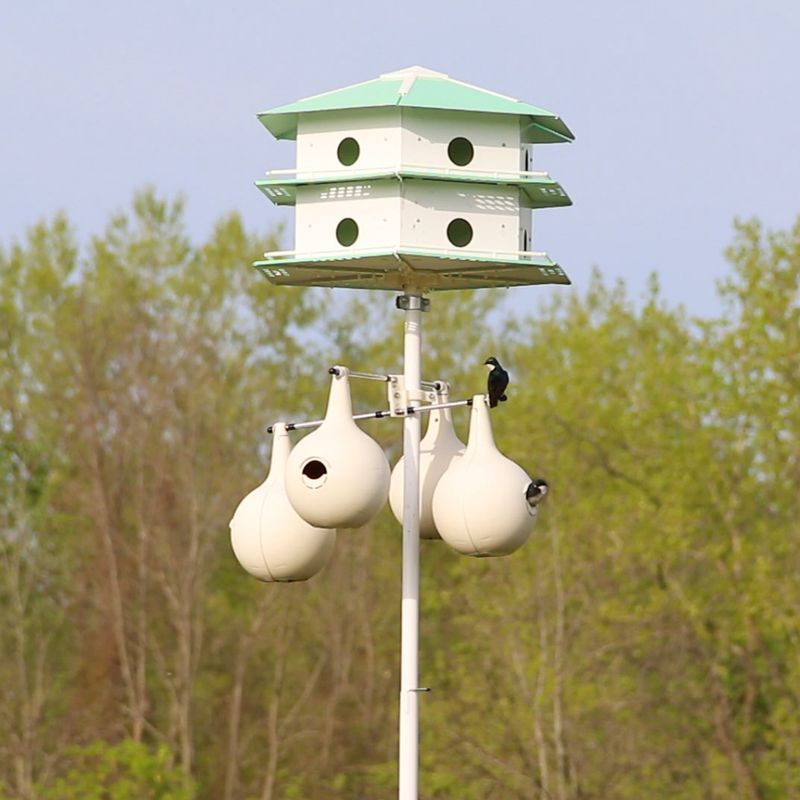
Purple Martins need specific housing designed just for them. Apartment-style martin houses or hollow gourds clustered together provide ideal nesting spots.
The houses should contain multiple compartments, each about 6x6x12 inches in size. Martins are colonial nesters, meaning they prefer to live in groups rather than alone.
2. Location Matters Tremendously
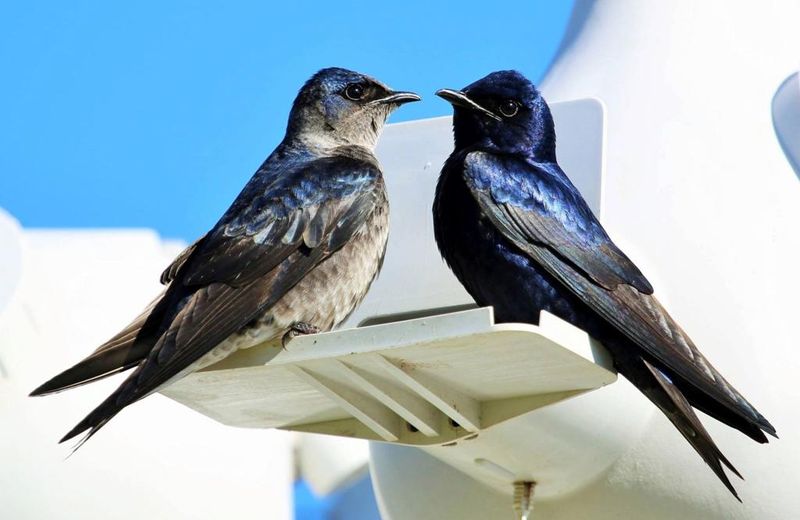
Position your martin housing in open areas at least 40 feet away from tall trees. Martins need clear flight paths and avoid places where predators might lurk.
The ideal spot has open sky overhead and plenty of flying insect activity nearby. A location near water bodies can be especially attractive since it provides both food sources and nesting material.
3. Raise Houses To Proper Height
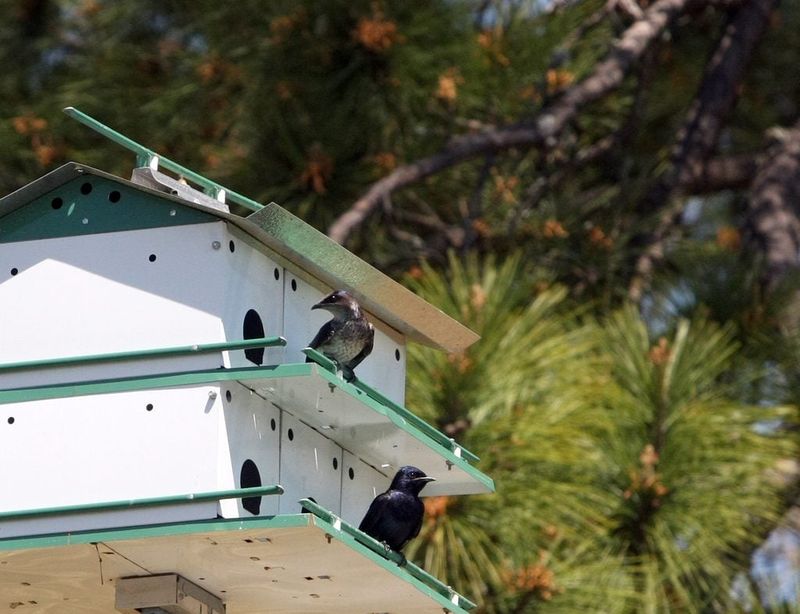
Mount martin houses 12-20 feet above ground. This height keeps them safe from ground predators while making the houses visible to passing martins.
Use a pole with a pulley system so you can lower the house for cleaning and maintenance. Wobbly or too-short mounting will discourage martins from taking up residence in your carefully prepared homes.
4. Offer Predator Protection
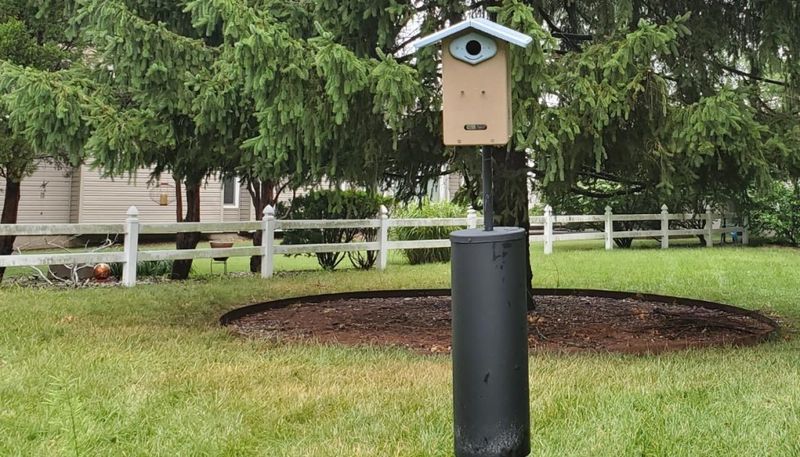
Guard against climbing predators with pole guards or baffles. These simple devices prevent raccoons, snakes, and cats from reaching nesting birds.
Hawk and owl guards can be added to houses for additional protection. Predator-proofing your martin housing significantly increases nesting success rates and helps martins feel secure enough to return year after year.
5. Use Decoys To Attract First Visitors
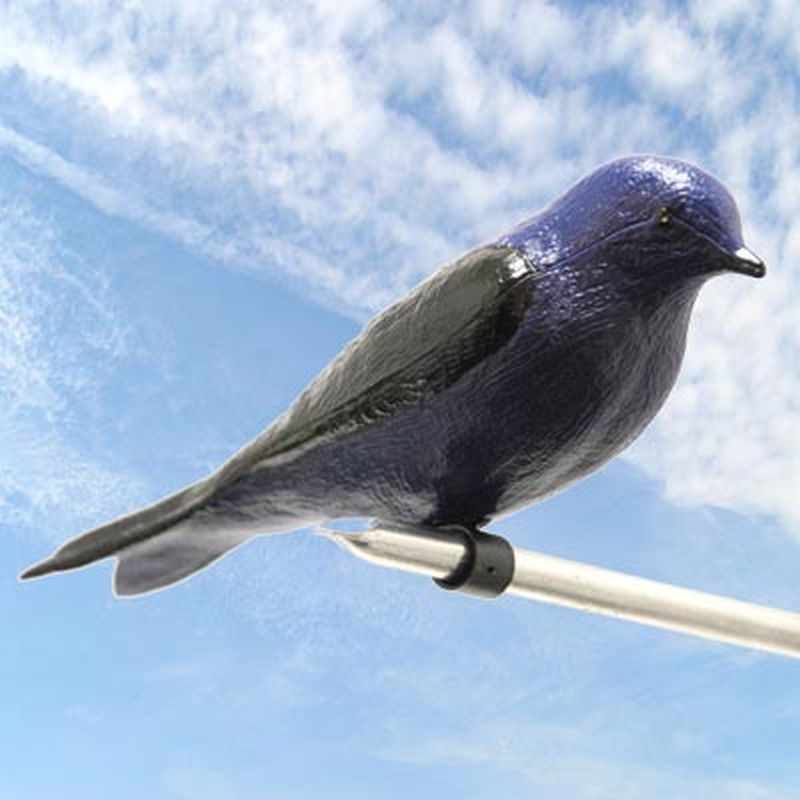
Hang plastic purple martin decoys on your housing to signal to passing birds that your site is safe. These social birds often check if others have already approved a location.
Position the decoys near entrance holes or on house porches. First-time landlords might wait several seasons before attracting martins, but decoys can significantly speed up the process by creating the appearance of an established colony.
6. Play The Dawn Song
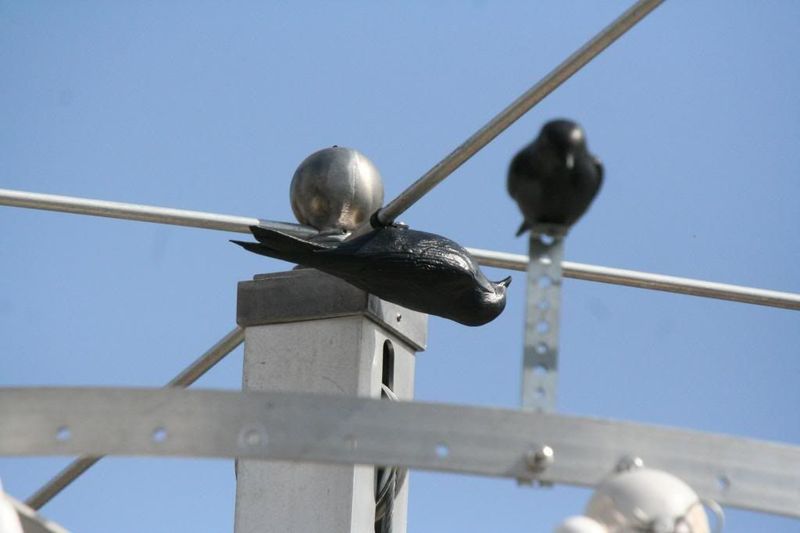
Purple Martins are attracted to their species’ distinctive calls. Playing recordings of their dawn songs can lure investigating birds to your housing.
Use a weather-resistant speaker system near your martin houses during spring migration. The cheerful chattering sounds should be played in early morning hours when martins are most active and searching for nesting sites.
7. Create Mud Puddles Nearby
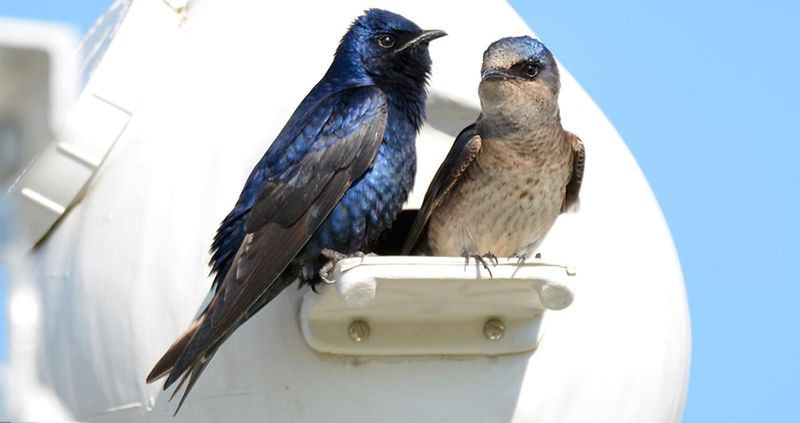
Martins use mud as a building material for their nests. Creating a small mud puddle area in your yard provides an essential resource.
Keep a patch of soil damp during nesting season by occasionally spraying it with a hose. This thoughtful addition might seem minor, but it can make your housing much more attractive to nest-building martins.
8. Maintain Proper Entrance Holes
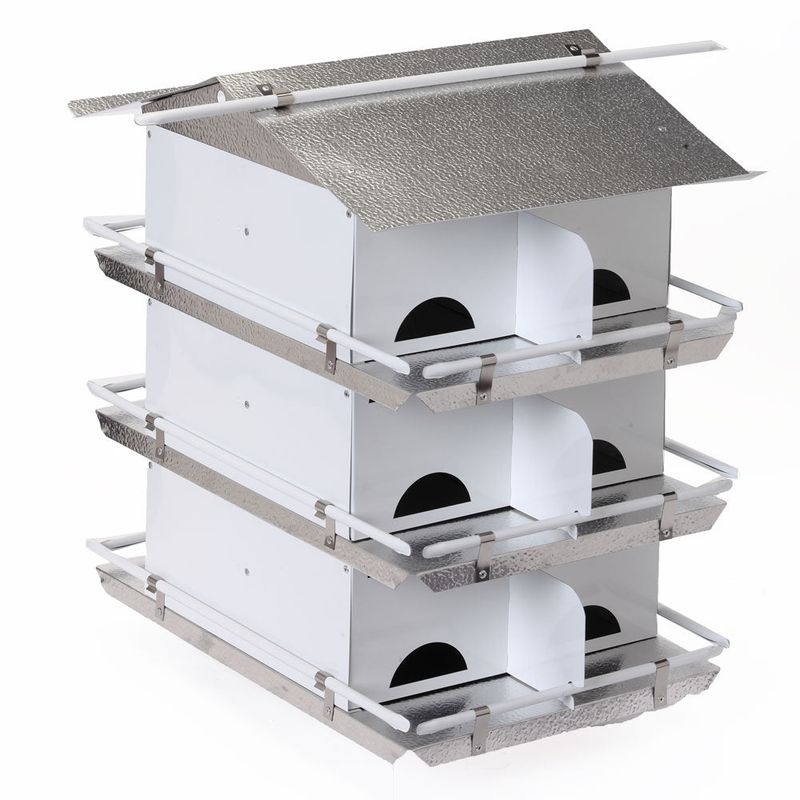
Use entrance holes sized specifically for Purple Martins – approximately 2⅛ inches in diameter. This size allows martins to enter while keeping out larger competitor birds like starlings.
Some landlords use special crescent-shaped openings that further discourage starlings. Entrance holes should be positioned about 1 inch above the compartment floor to help keep nestlings from falling out prematurely.
9. Eliminate Competing Bird Species
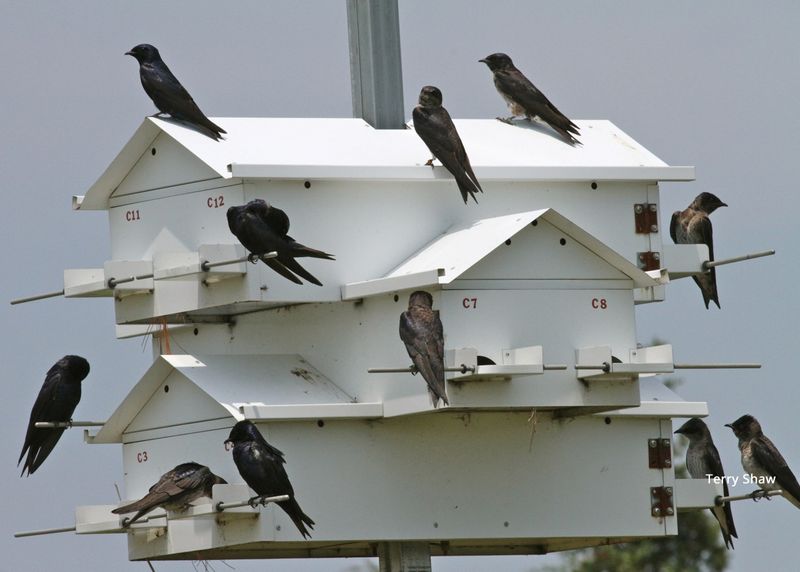
House sparrows and European starlings compete aggressively for martin housing. Prevent them from establishing nests by promptly removing their nesting materials.
Never allow these invasive species to successfully breed in martin housing. Some landlords use martin-specific entrance holes or temporarily plug entrances until martins arrive in your area during spring migration.
10. Provide Nesting Material
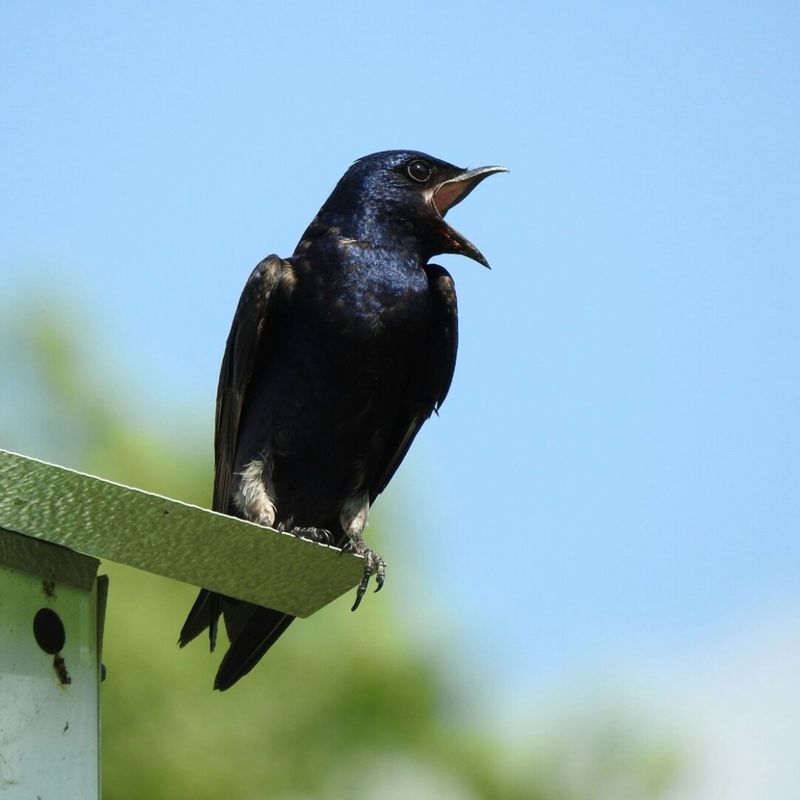
Offer small piles of pine needles, small twigs, and dried leaves near your martin housing. Martins appreciate these ready-to-use building supplies.
Place materials in open areas where birds can easily spot and collect them. Watching martins gather these offerings provides entertainment while helping them construct comfortable nests with less effort.
11. Regular Maintenance Schedule
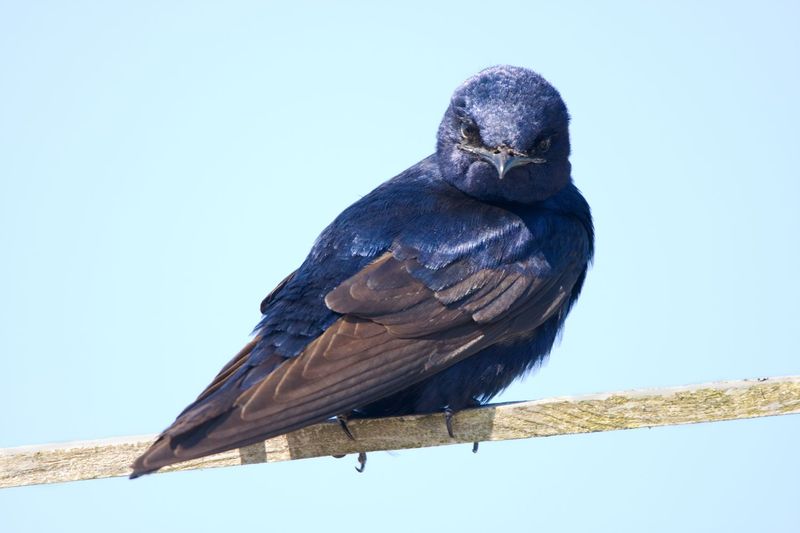
Clean houses thoroughly each year before martins return. Remove old nests, scrub compartments, and check for structural issues.
A well-maintained house attracts more birds and prevents disease. Many successful landlords lower their houses after the breeding season, clean them thoroughly, and then raise them again just before the spring arrival of the first scouts.
12. Join Martin Landlord Community
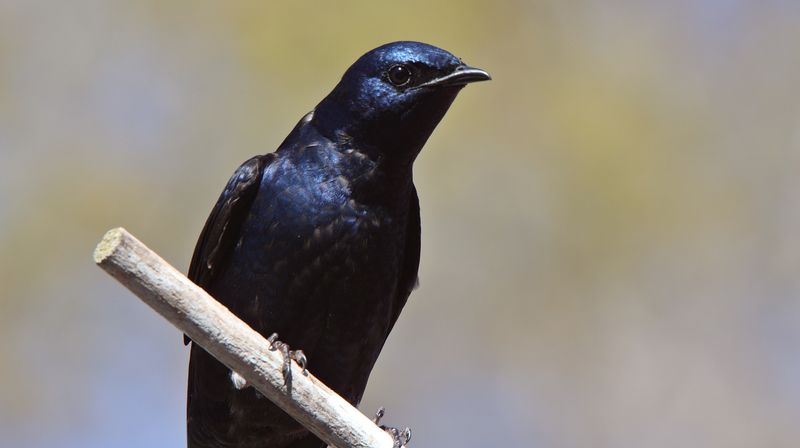
Connect with experienced martin landlords through organizations like the Purple Martin Conservation Association. These communities share valuable tips and regional information.
Local knowledge proves incredibly valuable since martin behaviors vary by region. Many established landlords gladly mentor newcomers, providing advice on attracting your first colony based on what works in your specific area.
13. Practice Patience And Persistence
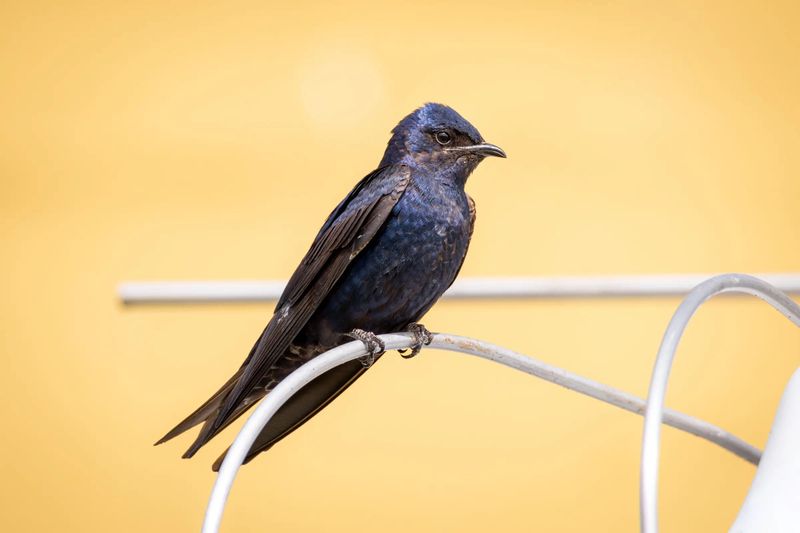
Attracting your first martins often takes several seasons. Don’t get discouraged if birds don’t move in immediately.
Continue maintaining your houses and implementing these strategies. Once martins discover your site and successfully raise young, they’ll likely return year after year, bringing their offspring with them and gradually building your backyard colony into a thriving community.





